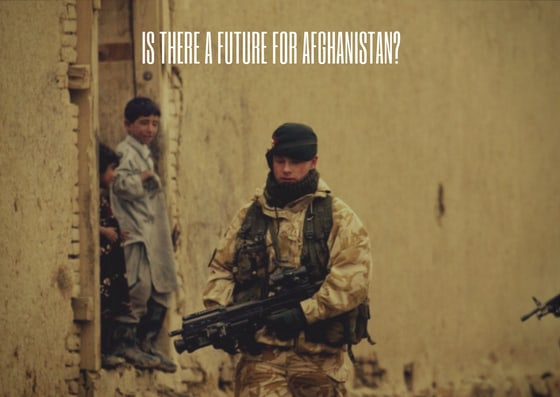Is There A Future For Afghanistan?

Disclaimer: the following post is based solely on my opinions. Which in turn are based on Internet research. As with everything in life, it should be taken with a pinch of salt.
After a development spurt in the 1970s sponsored by the extinct URSS Afghanistan seems to have entered a state of permanent war. The never-ending conflict has taken its toll on the country and sometimes it feels like there’s no way out of this misery and onto a better future. I’d like to take a moment to just examine the current situation of the country and offer my thoughts on the matter.
The Past
Afghanistan became a sovereign country in the beginning of the 20th century. The decades between the 1930s and the 70s were of stability and the government leaned more and more on the soviet side, which meant investments in infrastructure, modernisations and social reforms that saw an increasing participation of women in public life – including attending university and becoming part of the workforce.
In the late 1970s the People’s Democratic Party Afghanistan (PDPA) launched a coup and took over the country. What had the potential to be a good thing (the party prohibited usury, declared the equality of genders and introduced women in politics) was handled with violence and intolerance, including inside the party itself. The result was a civil war opposing the Party and the Mujahidin, at first – the war escalated from guerrilla proportions to being a sophisticated international affair in which the USA and the URSS were closely involved.
The aftermath of the Soviet War was chaos: although the international forces withdrew,the government was unable to put the pieces back together and create a united nation. It wasn’t an easy feat for the Taliban to take over, in 1996, and they did it at the cost of thousands of lives. The group controlled the country by applying an extremely strict and misogynist version of the Sharia law, which not only led millions fleeing out of the country but also removed half the workforce of the country from public life; moreover, they weren’t able to supress the conflicts within the country and against other nations – besides the casualties, Afghanistan saw the ruin of its infrastructure.
Following the attacks of 9/11 the country was invaded by military forces from around the world seeking to destroy Al-Qaeda (who had a safe place in Afghanistan under the Taliban); associated with them was the Northern Alliance, a rebel group bent on removing the Taliban from the government.
The Present
After more than ten years of war, the results could not be any different: the number of casualties is monumental and the country was left, at least for a while, in shards. Following the destruction of pretty much everything, the international forces that had arrived in the country as combative switched their efforts to the reconstruction of Afghanistan once their opponents had been somewhat neutralised. As a result, hospitals, schools and other basic infrastructure were rebuilt, and the people started returning to the country.
Economically, Afghanistan is one of the poorest and least developed countries in the world. Its economy is based on agriculture; however the production of pomegranates, melons, grapes and apricots is overshadowed by the cultivation of opium. And more and more women are retaking their public life and re-entering the work force, as the 2004 Constitution calls for gender equality.
The great challenge faced by Afghanistan is garnering international investments; far from stability due to the mini-wars waged locally and largely dependent on donated money, it’s not shocking that investors don’t see the country as a possible candidate.
The Future
At the last U.N. General Assembly (2015) Afghanistan delivered a very much-improved image of the country: better life expectancy, better literacy and diminished gender gap, all due to a democratic regime (one could argue the meaning of this data, since the base for comparison was a state of war).
The focus was strengthening the idea that Afghanistan is, in fact, developing and is an ideal candidate for foreign investments, especially because one of their sources of income is mining, with the land being rich in coal, copper, gold, lithium, etc., oil and natural gas liquids.
Behind all these statements, the appeal for international support – while Afghanistan isn’t able stop all internal conflicts they’ll need foreign help. For now, it’s implausible to see the country standing on its own two feet on the near future. But it’s possible to glimpse it being slowly rebuilt and overcoming the stigma of war, all because of millions of brave men and women who work everyday towards such goal.
